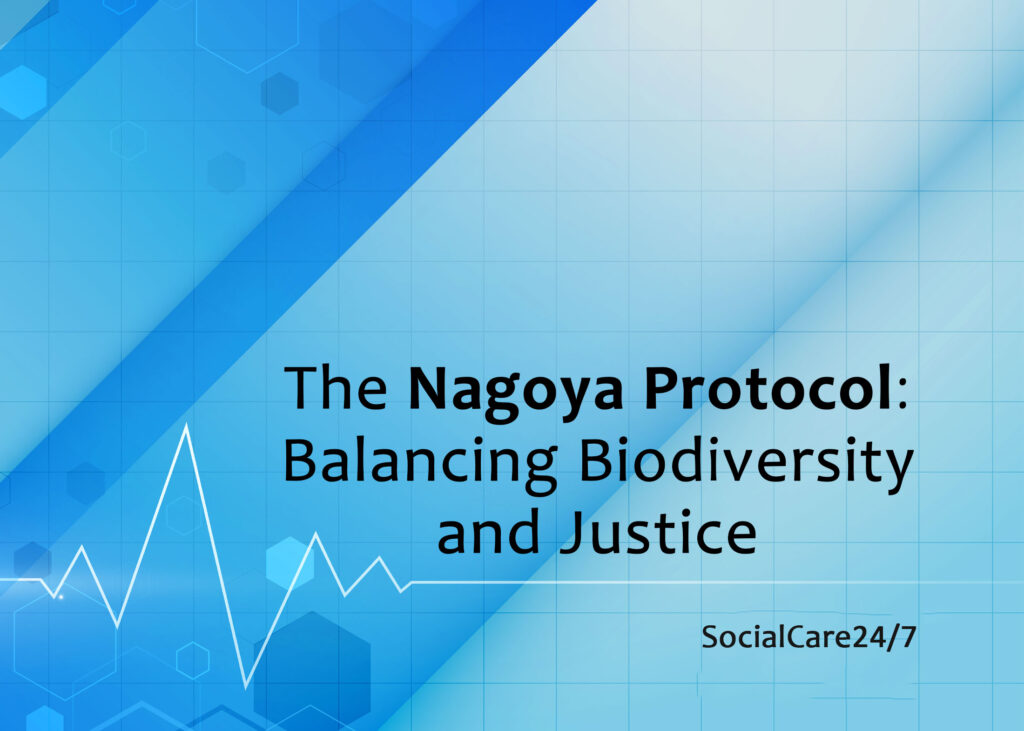The fragility of our environment is becoming more apparent worldwide. The Nagoya Protocol symbolizes optimism and justice. The globe reached this agreement at a crucial 2010 conference in Nagoya, Japan. Its fundamental purpose is to ensure DNA resource benefits are shared. Industries use these resources without paying for them.
The protocol aims to fix this imbalance by ensuring biodiversity-rich countries and indigenous groups get fair credit and benefits. This Article talks about the main parts of the Nagoya Protocol, including its goals, effects, and the problems it faces in promoting a fair and long-lasting way of managing biodiversity.
You will also learn about the extensively crucial role played by the peoples of the indigenous communities in the Nagoya Protocol.
Origins of the Nagoya Protocol
People made the Nagoya Protocol out of concern about species loss and the need to protect it. Gene resources became more critical as companies grew. These resources were often taken with paying the countries and groups that owned them more. It was clear what the problem was how could the benefits of biodiversity be appropriately shared among everyone who had a stake in it?
The Countries worked together to create a system that encourages fair access and a share of benefits. The Convention on Biological Diversity, established in 1992, made these talks possible. However, to address the complicated issues of genetic resource use, a more detailed agreement became necessary.
Because of this significant need, the Nagoya Protocol was created and came into existence. It tries to balance the needs of emerging countries with those of businesses and academics worldwide.
Key Objectives of the Nagoya Protocol
The Nagoya Protocol is based on a set of primary goals that show its dedication to fairness and long-term success. One of its main goals is to set clear rules for access and benefit-sharing. This will ensure that when genetic resources are used, the benefits are shared with the groups and countries that initially possessed them. This includes financial rewards and attempts to share technology and build people’s skills.
Another vital goal is promoting the protection of wildlife. The plan promotes long-term actions that benefit people and the environment by giving countries reasons to safeguard their biological resources. The agreement is based on the idea that biodiversity should be valued and protected for future generations, with an equal focus on fairness and protection.
Access and Benefit-Sharing Mechanisms
Two of the most important parts of the Nagoya Protocol are access and sharing benefits. With the permission of the countries or groups that own the genetic resources, these systems ensure they are used legally and morally. This is especially important for indigenous peoples, who have been taking care of biodiversity for a long time and have a lot of useful cultural information.
For these systems to work, countries must make laws about who can access genetic resources and how to share benefits. Often, this means making permits or contracts that spell out the rules for use and everyone’s responsibilities. The Nagoya Protocol promotes openness and responsibility, which leads to more fair outcomes, to protect the rights of resource-rich countries and groups.
Challenges Faced During Nagoya Protocol Implementation
The Nagoya Protocol has reasonable goals but will take a lot of work for many reasons. One big problem is that emerging countries sometimes have the power to make and enforce the necessary laws. There is a gap between the protocol’s goals and what happens in many countries because they need the money or technical know-how to apply its provisions successfully.
Another big problem is that different parties have different goals. Other countries may have different objectives when protecting species and using genetic resources. Balancing these various needs can be challenging, especially when private companies, researchers, and indigenous groups all have a stake in the result. The Nagoya Protocol may only reach its full potential if its sides work together and commit to it.
The Indigenous Peoples played an Important Role
The indigenous peoples and their villages were significant to the success of the Nagoya Protocol. As people who hold traditional knowledge and take care of wildlife, they make essential contributions to the goal of sustainable resource management. The policy clarifies that they have the right to genetic materials and traditional knowledge and stresses their importance in decision-making.
For the protocol’s goals to be met, these groups must be given more power. Indigenous people should be included in talks and benefit-sharing arrangements to make processes fairer, trustworthy and open to all. This helps protect biodiversity and ensures that the opinions of groups that have been ignored in the past are heard and honored. The environment that Indigenous communities take care of does well when those communities do well.
Conclusion
The Nagoya Protocol represents a major advance in biodiversity protection and genetic material distribution. The protocol aims to give countries and groups with lots of biodiversity more power while supporting justice and sustainability by setting rules for entry and sharing benefits.
There are still some issues with the app, but many good things could be changed. The Nagoya Protocol’s spirit can help us create a world where wildlife lives and future generations can enjoy the planet’s wealth. We can do this if we all work together and value what each person brings. For a fairer and longer-lasting future, the Nagoya Protocol’s ideas help us figure out how to better interact with nature.
This was a brief article on the Nagoya protocol to provide you with a good understanding about it.



